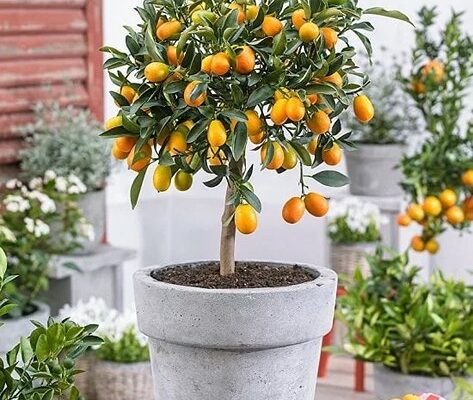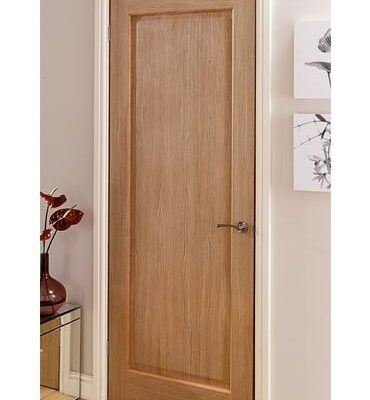8 Small Fruit Trees Magic in Your Patio
Small fruit trees are a great choice for those with limited outdoor space. The magical compact size of small fruit trees makes them ideal for urban gardeners who want to grow their own fresh and delicious produce.
There are numerous types of dwarf fruit trees that have been specially bred to grow in container gardens, making it easy for anyone to try their hand at growing their own fruit. Although these trees may cost more than the average plant found at a garden center, success can be achieved by following a few simple rules. Many small fruit trees, such as dwarf apple trees, can be grown in pots on a balcony or patio.
It is important to note that not all fruit trees can be grown in containers. To ensure that the tree you choose is suitable for container gardening, look for small or dwarf varieties that have been grafted onto a different root system to restrict their growth. These trees may be labeled as patio, mini, or dwarf on the plant label or description, so be sure to check before purchasing. Full-sized fruit trees will not thrive in a pot.
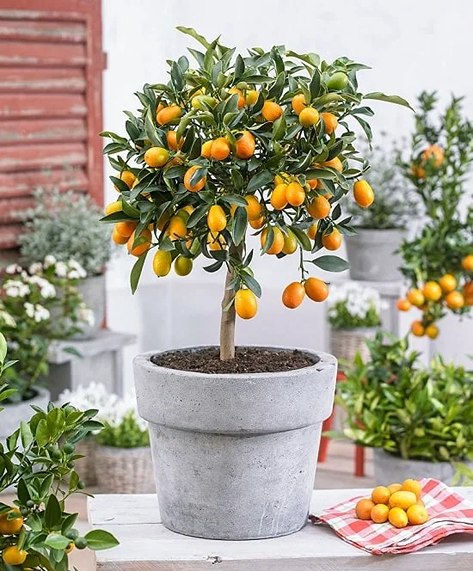
Before purchasing a fruit tree to grow in a container, it is crucial to determine whether you need more than one tree for successful pollination. Some fruit trees, such as cherries, apricots, and peaches, are self-fertile and will bear fruit even if only one tree is planted. However, apple and pear trees require a plant partner nearby, either in your garden or within a one-mile radius, to ensure successful pollination. Small fruit trees, like blueberry bushes, can be an attractive addition to a small garden or landscape.
To ensure success, it is essential to use a large pot and a suitable soil-based potting mix. Choose a sunny spot, and if possible, a sheltered area to ripen the crops and enhance the fruit’s flavor. The fruit tree should be well-watered, especially during hot summers.
With these few simple guidelines, anyone can grow their own crisp apples, juicy pears, fuzzy skinned peaches, and golden apricots in a container garden. All that is needed is a large basket or bowl to harvest the fruits of your labor.
Apple
Growing apple trees in a container is a great way to enjoy the simple pleasure of picking a crisp apple from the tree. It’s important to choose the right sized tree, the correct compost, and the largest pot you can find. For apple trees, it is recommended to use a pot that is at least 50cm tall and 40cm in diameter.
There are several apple tree varieties that are suitable for container gardening, such as Discovery, Falstaff, Fiesta, Kidd’s Orange Red, and Sunset. These varieties are known for their compact growth and ability to thrive in a container.
Bare-root apple trees are a more affordable option than fully grown trees and are typically available from late autumn to early spring. It is recommended to plant bare-root trees as soon as they are purchased. Once the tree is planted in the pot, it should be mulched to conserve moisture, and watered regularly during the summer months to keep the soil moist.
Pruning is also an essential part of apple tree care, and you should follow the instructions provided for your specific variety. Pruning will help to promote healthy growth and increase fruit production.

Apricot
Growing an apricot tree is a great investment if you have a sheltered, south-facing spot with walls to reflect the heat. To ensure it is one of the best fruit trees to grow in pots, make sure you choose a tree that is labeled as a patio variety and is self-fertile. When you purchase it, plant it immediately into a pot that should be around 50cm (20in) in diameter.
In cooler climates, spring blossom should be protected from night frosts by covering it with horticultural fleece or polythene, making sure not to touch the flowers. During hot spells, drench the plant every week, or every three or four days if it’s an extremely dry summer. A good variety for the UK climate is ‘Isabelle,’ which bears fruit in late summer. The trees will eventually reach a height of around 1.5-2m.
It’s important to note that apricot trees require tender loving care. They need a sheltered, south-facing spot with walls that can reflect the heat. Without proper care, the tree may not thrive and produce its sweet, sun-warmed fruits.
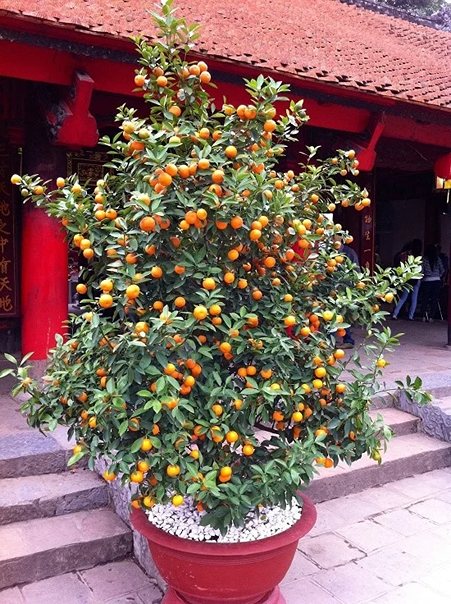
Cherry
When it comes to edible cherries, there are two types: sweet and sour. Sweet cherries are perfect for picking and eating, while sour cherries are best for cooking. Sweet cherries are a great option for pot-growing and should be placed in an open space with lots of sunshine to thrive.
If you have limited space but are interested in growing fruit in pots, you can opt for a specially bred patio tree such as ‘Sylvia’ or ‘Cinderella’. ‘Sylvia’ is self-fertile, which means that you only need one tree to produce plenty of fruit. This can be a great option for those who have limited space but still want to enjoy fresh cherries.
To ensure that your cherry trees grow and produce healthy fruit, it is important to water them once a week during late spring and summer, using a full watering can. In terms of pruning, it is a simple process and only involves cutting back each branch by a few inches in height during the height of summer, which typically falls around July.
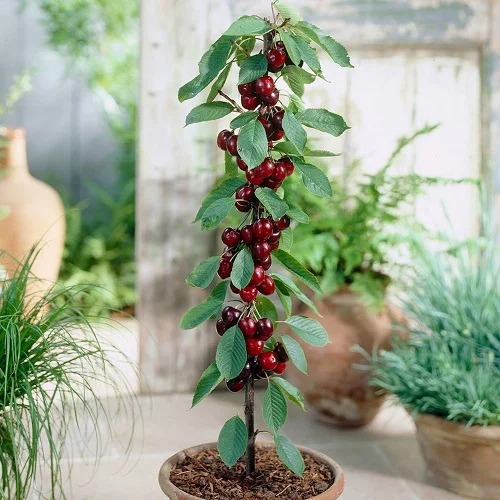
Fig
For those living in warm climates, there is a variety of fig trees to choose from for the best fruit trees to grow in pots. However, if you are living in cooler climates like the UK or US, it is recommended to select a fig variety that can withstand cooler climates, such as the ‘Brown Turkey Standard’. Make sure to find a sunny spot and plant your fig tree in the spring.
Figs are known to produce more sweet and tawny fruits when grown in a container. During the summer months, water the container once a week and fertilize with Blood, Fish, and Bone in the spring. While figs are vigorous growers, pruning is necessary to ensure the tree fits the available space once it has fruited.
If you are residing in areas with very low temperatures, you will need to protect your fig trees from frost damage by using fleece protection.
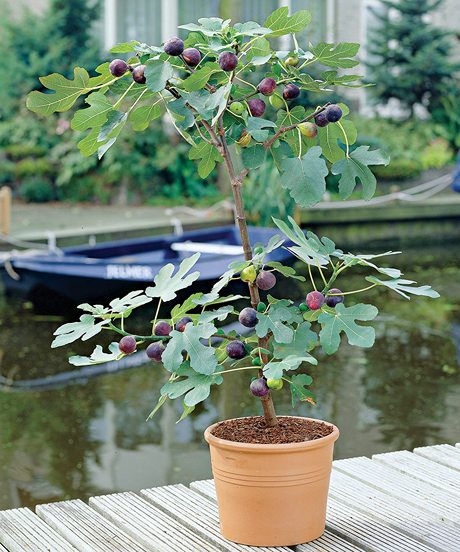
Orange and lemon
If you live in a region with warmer temperatures year-round, then citrus fruits are excellent choices for growing the best fruit trees in pots. However, in cooler climates, it’s best to grow citrus fruits as part of your greenhouse ideas, on a conservatory window ledge, or outdoors in a very sunny and sheltered spot during high summer. The cold and damp weather will not allow them to thrive outdoors throughout the year.
Citrus plants need consistent moisture to prevent leaf drop. Therefore, it’s recommended to place the pot on a saucer of damp gravel and water the plant when the compost surface feels dry. In summer, you may need to water them daily. It’s best to use rainwater if possible.
For citrus trees such as lemons and oranges, it’s crucial to feed them with a specialist citrus fertilizer or a seaweed-based feed weekly during spring and summer.
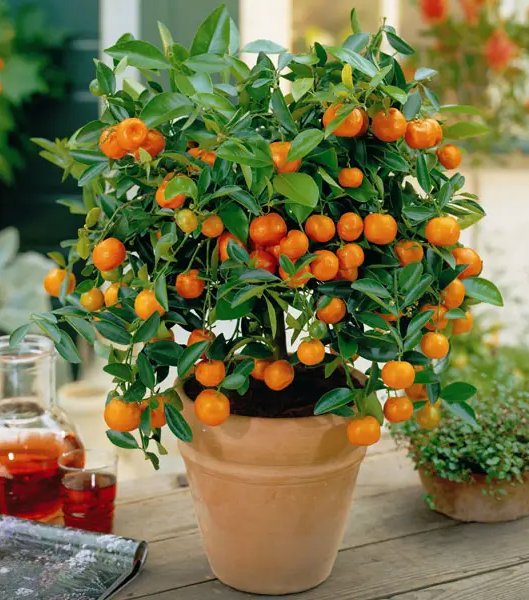
Peach
For those looking for small garden ideas, patio peach varieties are a great option. Despite the tree’s small size, the fruit produced is full-sized. However, in cooler climates, it is important to bring peach trees inside from December until the end of winter, and growing them against a warm, south-facing wall will be beneficial.
Dwarf varieties are relatively easy to cultivate, and they provide a double benefit, with beautiful blossom appearing from February onwards (depending on the variety) as well as the prized golden fruits. Watering the plants in summer is critical, and this should be done when the compost feels dry around 5cm below the surface. It is recommended to check the compost’s moisture level daily.
Plant the tree in soil-based potting compost and feed every two weeks with tomato feed. Most dwarf varieties will not require pruning. However, if you plan to have only one peach tree, it is essential to ensure it is pollinated by another tree located within a mile’s radius of your garden.
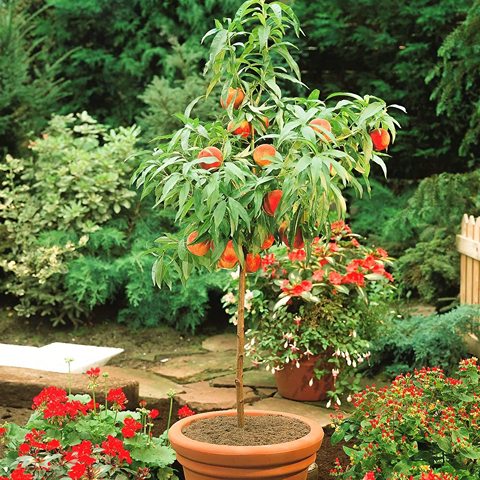
Pear
Pear trees are an excellent choice for growing in pots, but it is important to select a pear tree that has been specifically grown for container gardening. Look for the term ‘Quince C’ on the plant label, which indicates the rootstock that controls the size of the tree.
In order to encourage more fruit buds to grow the following year, it is recommended that you prune the tree during the summer. Pruning is a simple process that involves cutting back some of the branches. This will help your tree to focus its energy on growing fruit, rather than on producing new branches.
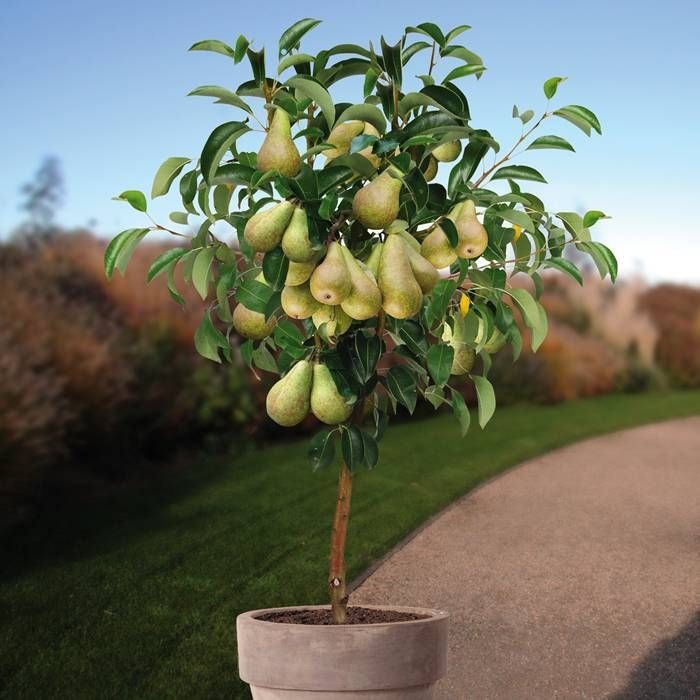
What is the ideal pot for growing small fruit trees?
For the best fruit trees to grow in pots, the size of the planting pot is important. The pot should be at least twice as deep and wide as the root ball of the tree, with a recommended size of around 50cm in height and 40cm in diameter. A halved wooden barrel or a galvanized dustbin could be suitable options. Drainage holes are crucial, and if the planter does not already have them, they should be created.
A layer of crocks should be added at the bottom of the pot to aid drainage, which can be made up of small chunks of concrete, broken pieces of pot or pebbles. It is essential to avoid pots that narrow at the top, as this makes it almost impossible to remove and repot the tree later on.
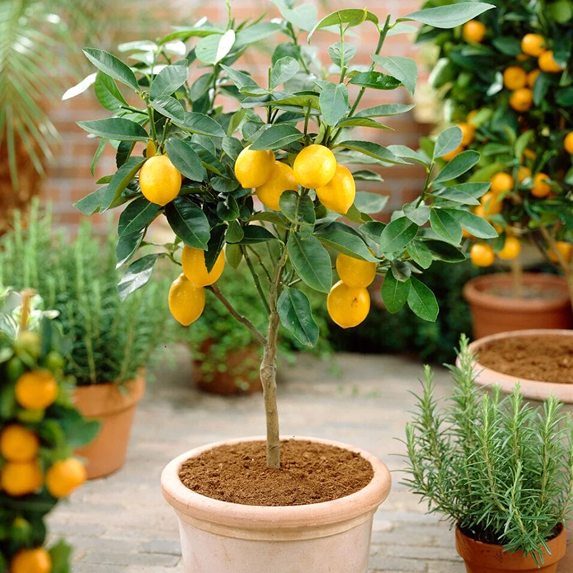
How to plant a fruit tree in a pot
- Choose a sheltered and sunny position on the patio for growing fruit trees in pots.
- Opt for a container that is 30 liters or larger, but avoid plastic containers as they may be too light and prone to damage in strong winds.
- Use soil-based compost that is heavy and well-draining, and add small stones or gravel to the bottom of the container for added stability and drainage.
- When planting the fruit tree, position it so that the graft is 2-5cm above the soil level.
- Fill the container with compost until its 2.5cm from the rim, and firm it around the roots to remove air pockets.
- Keep the compost moist and feed the tree with a high-potash liquid fertilizer from the time it flowers until just before harvesting.
- When the tree is dormant, usually after 4-5 years, replant it in a container that’s 35 liters or larger. Prune the tree heavily and remove 20-30% of its roots.


